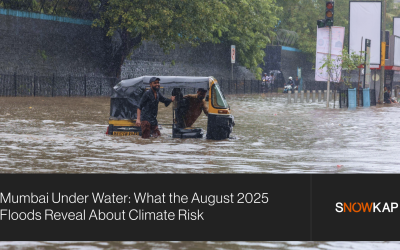Stop Expecting Profits in Old Markets
The retail businesses have exhibited immense resilience while walking the unchartered territories of the pandemic. This was achievable given the channels of e-commerce, which is estimated to reach a staggering $1.1 trillion in India. What once presented itself as an alternative is now retail’s new normal. The shift is not a novel narrative as e-commerce dates back to the 1960s. However, it was the 1990s where it really took off with Amazon, Sting CD and secured online purchases of Pizza Hut. The current landscape includes physical storefronts, brick-and-mortars as the ‘veteran’ of retail that’s constantly fighting the newcomer, ‘e-commerce’, and is not doing a great job. In 2017, online retail sales increased by 12.1% on an average per year, amounting to approximately 149 billion pounds.
The b2b e-commerce sales alone crossed $4.9 trillion in 2021. 50% of B2B companies have reported to prefer blogging as a market strategy while 40% choose sending email newsletters along with creating social media content to cement credibility and build brand awareness, respectively.
E-Com vs. D-Com
The new e-com model sits extremely advantaged; especially post COVID, compelling retailers to surmount to the digital frontier to stay relevant. Retailers must provide potential customers with the digital shopping experience by advancing online stores & standard merchandising. Brands that have resorted to e-com have experienced sizable growth. Retailers offering in-store pick-up for online orders alone experienced a revenue growth by 27% in Q1 of 2020.
Another shift taking place as we speak is that from e-commerce to d-commerce.

Simply put, e-com is the process of selling/buying products on an online platform using technologies like e-funds transfer, mobile commerce, internet marketing, supply chain management, EDI & automated data collection systems. Supply management tools can be availed from various sustainability management platforms like Snowkap.
Meanwhile, d-com is a specialized form of e-com used by associations that deliver products online. It comprises marketing, promotion, analytics, content-development, customer achievement, retention and experience- throughout the procurement process. The d-com space is highly competitive and dominated by the presence of numerous experts that aggressively participate towards magnifying their market share. Competition strikes vis-à-vis price, quality, brand, product portfolio & differentiation.
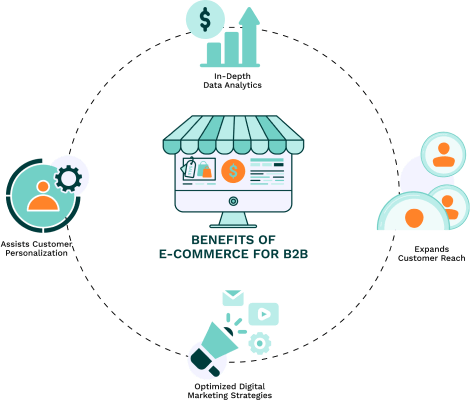
Why Is E-Commerce B2B’s Biggest Ally
As per a survey conducted by Digital Commerce 360 in 2018, 48% of companies conducted 50-75% of all corporate purchases online. Come 2021, b2b ecommerce store is one of the fastest growing sales models, taking up 13% of total sales.
The research helped break the belief that b2b ecommerce customers do not order online as the contemporary demographics mandate the new generation at managerial positions, with purchasing power to surpass older processes and resort to e-com.
In the B2B space when orders are processed digitally, buying efficiency tends to improve for all stakeholders involved – manufacturers, distributors and other types of b2b sellers. Moreover, e-commerce solves problems faced by the traditional structure with regard to entry barriers (B2B & B2C2B). It also expands customer reach and assists customer personalization with optimized digital marketing strategies. All of which help with improving business management – for suppliers, intermediaries and customers by leveraging AI & ML empowered software solutions.It’s crucial for b2b businesses to be able to assess their performance internally in order to gauge their competitive standing and boost engagement. This is best achieved by referring to data analytics for making more informed decisions. Analytics help provide an in-depth analysis of sales-effectiveness by generating various reports to understand progression or lack thereof. According to an eMarketer’s report 94% of b2b executives said that b2b ecommerce is critical to business advantage and result.
So what’s driving these unparalleled shifts?
It is the changing consumer behavior due to increased internet penetration and mobile usage obviously, but also the increased competition because of it. The pandemic has further propagated digitization of things exponentially.Digging into the demographic to understand the shift is imperative as Millennials (67%) and Gen Xers (56%) are the biggest online shoppers. These two segments spend more money online because they also spend 60% more time online than their older counterparts. Even though women are fabricated as the universal shoppers, men have shown to dominate the online space by spending 28% more. It was also revealed that 43% of online purchases are made in bed, 23% at the office and 20% from the bathrooms and/or cars. Online shopping is now pretty subliminal actually.
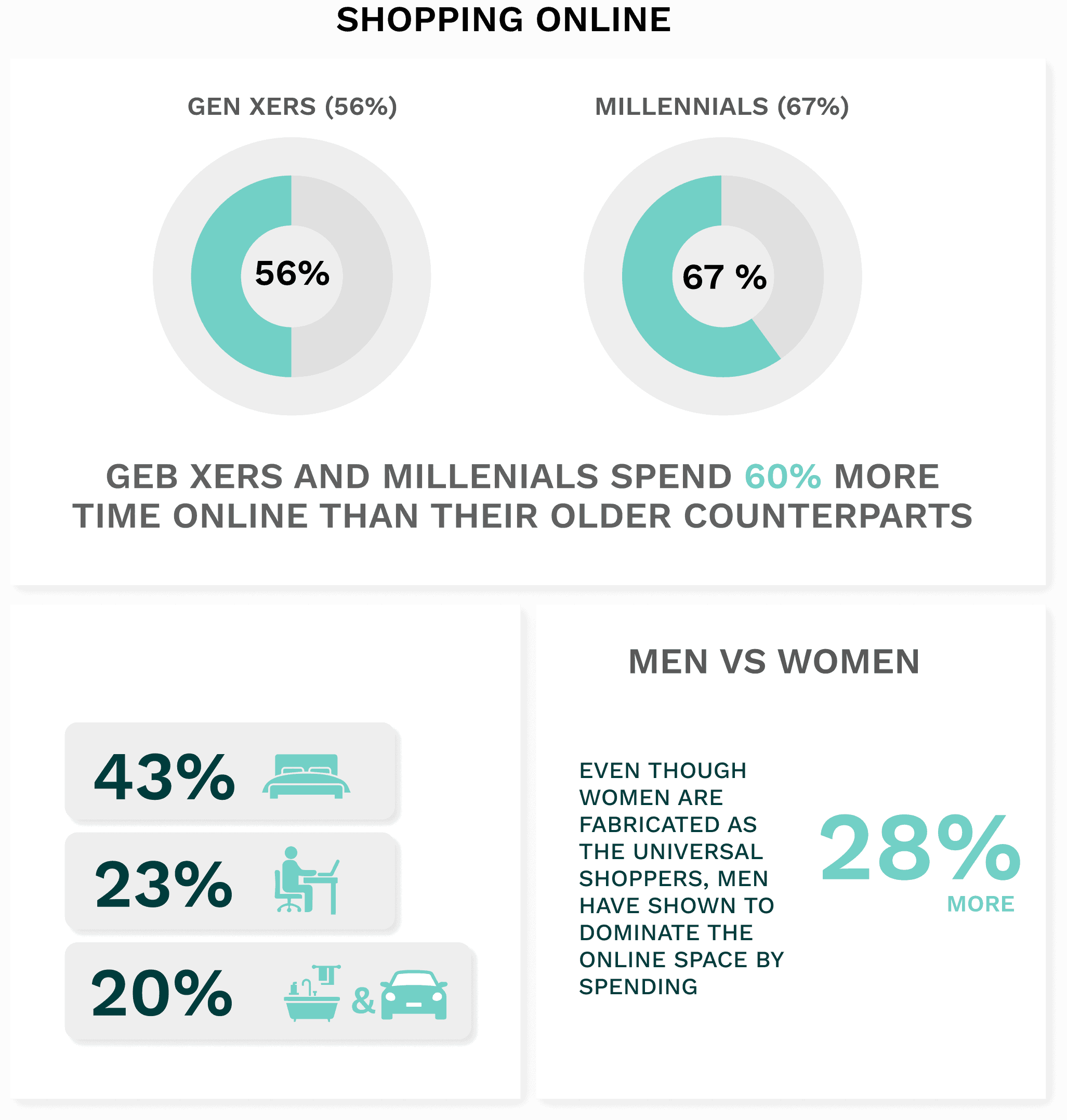
Customer expectations have restructured generating new hopes around customer engagement, centering on convenience and comfort. Product customization, connectivity, collaboration, convergence and interaction are absolutely non-negotiable in this scenario.A study by Isoline in 2019 found that 80% of B2B buying decisions are based either on direct or indirect customer interaction/experience whereas, only 20% on actual offering or price. To summarise the research for you, B2B buyers have shown to have rather precise expectations, wherein 45% want personalized content, 44% easy-to-use ROI calculator, 38% seek AR options and 33% video chat options.
B2B ecommerce trends to incorporate in 2022
If there’s anything that the market has learned from the pandemic and subsequent economic crunch is its resilience. The market will always find a way to function and its strongest tool now is EnD-Commerce. Business success is guaranteed with the incorporation of the following trends:
1.Creating B2C- like experiences for shoppers: B2b buyers think from a sales perspective after an extensive amount of research. According to Forrester, 74% buyers research online, implying that your websites (to begin with) must provide a good experience.
2.Expediting on online marketplaces: 75% of b2b procurement spending is predicted to take place online. Even before the pandemic, 50% of retail sales were online with Amazon, eBay, Alibaba, Etsy and Catch dominating the B2C retail industry and currently, only 6% of b2b buyers DO NOT use online marketplaces. As per Gartner, the enterprise marketplace is by itself a business model now.
3.Multi-channel selling: While the b2b ecommerce space is growing, selling platforms for businesses are still very limited. B2b sellers can choose to have expensive and customized ecommerce platforms or run to multiple vendors to get the job done. A plausible midway is syncing the inventory alongside to manage order fulfilment. Integration also increases operational efficiency by providing pre-built connectors to automate various processes.
4.Genuinely understand the growing demand of B2B customer personalization: Big commerce claims that personalization increases consumer spending by 48%. A specialised market of ‘customer experience management’ is expected to bloom reaching $14.9 billion by 2025. For example consumer willingness for sustainable products demand is very real. Businesses can optimize on customer data through AI & ML.
5.Launching Direct-to-consumer D2C: These open a wide range of opportunities around starting new revenue systems, learning about shopper behaviour patterns and building customer loyalty.
What does the future hold?
Experts claim that over the next five years, the payment market of d-com will record a 10.8% of CAGR revenue and as per the recent Morgan Stanley report; d-com is further estimated to account for 10% of India’s retail. Global investments and consumer habits stand fundamental towards fuelling this change to an extent where in 2040, 95% of shopping will be entirely online as per UK Online Shopping and E-commerce statistics. In the longer run, digital commerce will also get centralized to retail operations in Asian-Pacific countries. Furthermore, there are market estimates of $2 billion being spent by retailers on AI & ML based solutions every year since 2018 with the number to shoot up by 350% by 2022 according to indianretailer.com.
The battle is only half won if not sustainable: S-commerce
Sustainability commerce (apart from being the central point of business education now), is about creating profitable, growing companies that approach zero/negative or even net-positive environmental and social footprints, and that help their suppliers and customers do the same. Sustainability creates immense value for businesses by improving project outcomes.It even makes businesses more desirable as investors now respond to transparent and ESG-compliant disclosures. According to Coleman Parkes Research, 47% of internet users have stopped using products & services that do not share their personal value and the top value mentioned in this research was environmental protection. Explained further by the Triple Bottom Line (3BL) approach, companies thrive when benefitting three elements simultaneously – people, planet, & profit
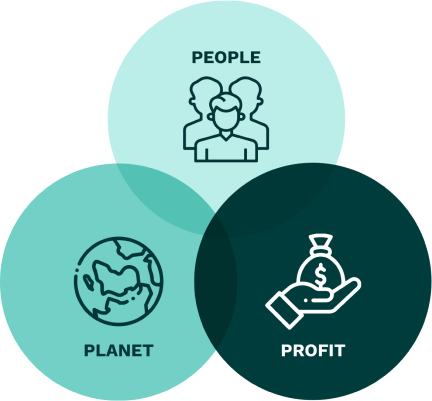
The scope holds especially for B2Bs for they have extremely befitting “green” technologies at their disposal to harness the potential. It is recommended to begin with volunteering related information like drawing out an environmental sustainability statement and distributing it. Utmost transparency is now expected from businesses vis-a-vis their energy and waste usage to still be in the game. Green technology in sales is no joke and businesses not optimizing on these trends are losing out irrevocably. Energy efficiency is better established and demonstrated through various sustainability software and ESG reporting tools, and these innovations are primarily driven by AI. Three most useful ways are :-

Predictive Analysis:
With the data available, analytics enable a clear understanding of consumer trends of the past to further help devise improved strategies, from a sales perspective. Deeper insights on how to cut costs through energy and waste management is also offered.

Internet Of Things:
As a smart communication network, it implies having solid access to data on how consumers interact with your product/service. This is also applicable to manufacturing and supply chains by giving information on how to cut down carbon emissions and waste.

Streamlined Productivity:
By generating better data on inventory management, substantial reductions in emissions can be achieved. There is a specialized software by the name of Customer Relations Management (CRM) which allows for businesses to track something so specific like customer potential even.
How to upgrade your B2B retail?
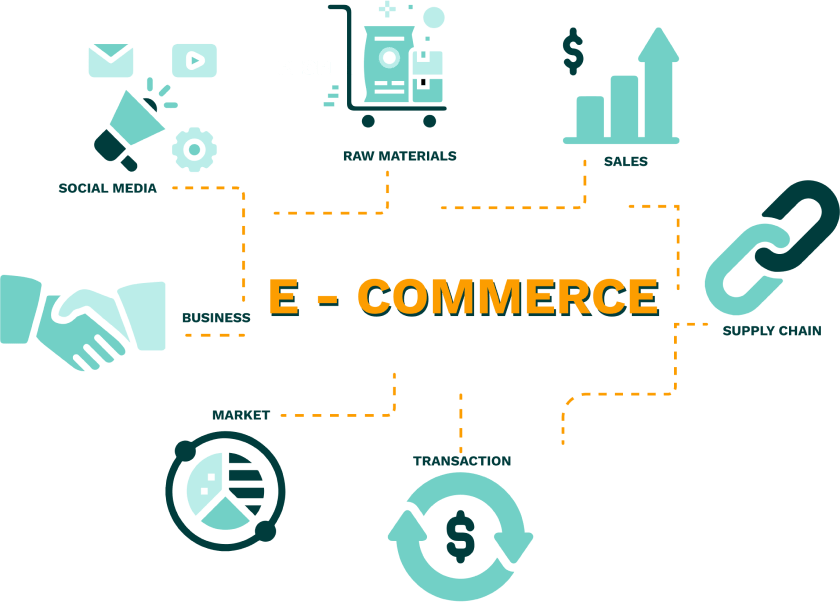
On-Site Search Functionality
The best ecommerce platform revolve around enhancing on-site search functionality, making wholesale easy on traditional customers by custom pricing, automating, syncing inventory, customer, third party softwares etc. Another best practice to a successful retail business is ‘humanizing’ the brand through social media.
Creating An Omnipresent Channel
Creating an omnichannel experience which is essentially a strategy connecting all of a company’s touch points – brick & mortar stores, social media, website, email, mobile etc., should be the aim to begin with as it makes customer traction and involvement generally synergized. The Coresight report indicates it is rapidly becoming the standard approach in the modern landscape with 74% retailers already implementing. The omnichannel strategy helps improve customer lifetime value, reach new customer segments, and increase operational efficiency, sales & inventory turnover. Retailers can use AI and ML to gain commerce insights to further check business and consumer problems, as well as leverage social media to expedite opportunities & convenience for all parties involved.
These marketplaces help businesses with sustainable sales
SNOWKAP enables businesses rather comprehensively by hand-holding through all the aspects – assessing baselines, goal setting & execution, digital assessment, network support, managing carbon ledgers, building consumer connect along with driving improvements with regard to material, energy, waste, water to help achieve the set goals. More contemporarily, with also impact and reporting. There are barely any organizations in the region catering to the mere versatility of sustainability- all of which help finally with sales.
Biolinked is another B2B platform that connects organic food suppliers with wholesome buyers globally.
Similarly, Pachama helps organizations purchase carbon credits to offset emissions and restore nature by bracing forest projects through marketplaces.
Live Creative Studio is another wonderful company which provides a directory of all sustainable businesses related to clothing, fashion, wellness, beauty, furniture & grocery, technology. The marketplace for sustainable sales is expanding and gaining relevance by the passing second and outsourcing sustainable strategies to experts is the tested way to go about it.
Conclusion
It’s safe to conclude that the shift to e-commerce is a rather permanent trend and staying relevant now calls for positioning a business as a retail business instead of choosing between e-commerce and retail. To thrive in the ecommerce ecosystem, it’s important for the businesses to be ready by allocating appropriate funds that will vastly and surely outweigh initial expenditure. To be absolutely bulletproof, e-commerce must be sought out in tandem with the prerogatives of s-commerce, best achieved through expert consultations.
FURTHER READING:


